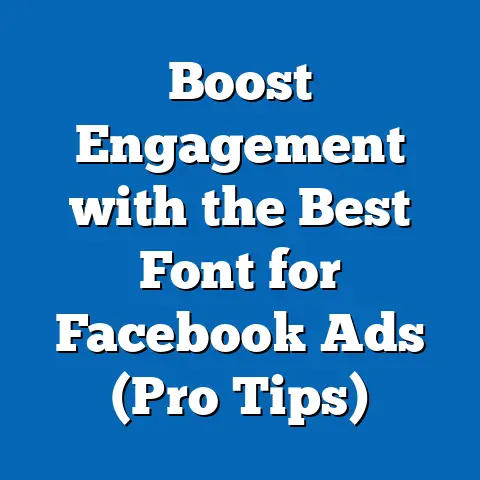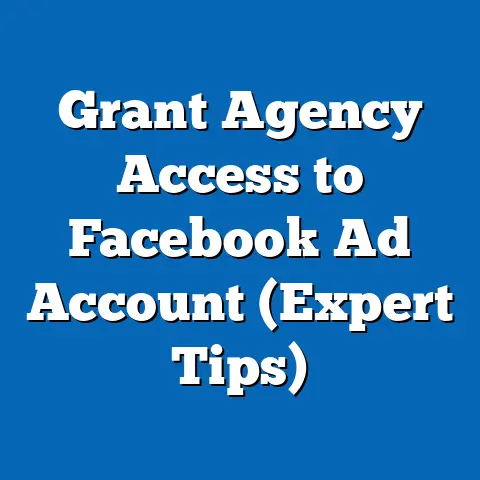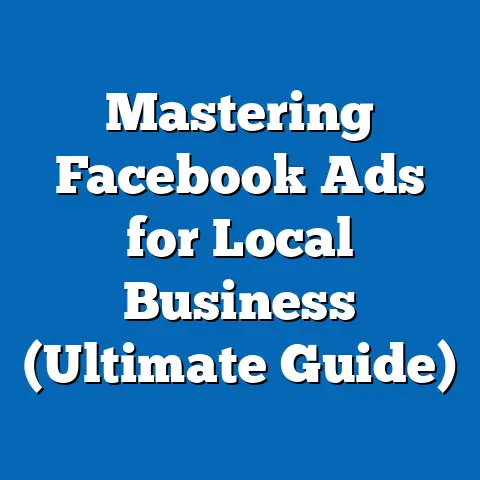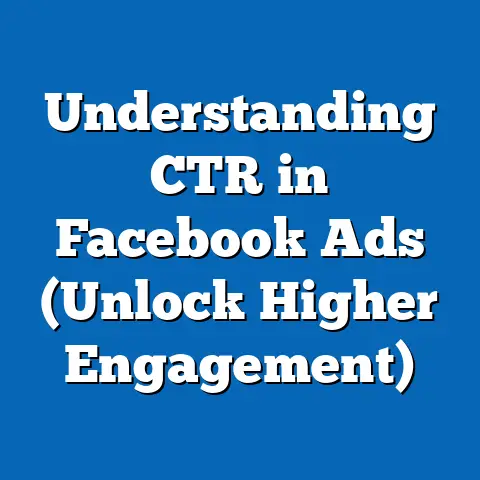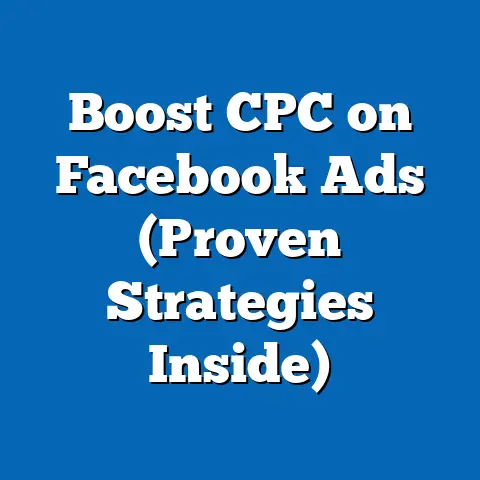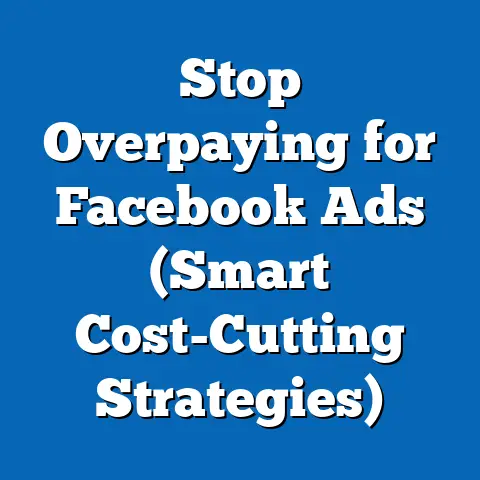Maximize Budget Ads on Facebook (Proven Strategies)
Facebook advertising has become an indispensable tool for businesses aiming to connect with their target audience, drive traffic, and boost conversions. What I’ve always appreciated about Facebook Ads, and what makes it particularly appealing, is its ease of maintenance. The platform’s user-friendly interface allows advertisers to efficiently manage their campaigns without needing extensive technical knowledge. This accessibility, along with the powerful targeting capabilities, makes it possible for businesses of all sizes to harness the power of Facebook advertising.
In this guide, I’ll walk you through a series of proven strategies designed to help you maximize your Facebook ad budget. From understanding the fundamentals of budgeting to scaling successful campaigns, I’ll share insights, examples, and actionable tips that will empower you to achieve your advertising goals without breaking the bank. I’ve learned a lot through trial and error, and I want to share my experiences to help you avoid the common pitfalls and make the most of every dollar you spend.
Section 1: Understanding Facebook Ad Budgeting
Budgeting in the context of Facebook ads is more than just setting a spending limit. It’s about strategically allocating resources to achieve specific marketing objectives. A well-defined budget ensures that you’re not overspending on ineffective campaigns while also allowing you to capitalize on opportunities that drive results.
What Budgeting Means in Facebook Ads
Budgeting for Facebook ads involves deciding how much money to spend on your advertising efforts over a specific period. This decision should be based on your overall marketing goals, target audience, and the potential return on investment (ROI). It’s not just about setting a number; it’s about making informed decisions that align with your business objectives.
I remember when I first started using Facebook ads, I simply threw money at campaigns without a clear strategy. Unsurprisingly, the results were underwhelming. It wasn’t until I started treating budgeting as a strategic process that I began to see real improvements in my ad performance.
Daily vs. Lifetime Budgets: Choosing the Right Option
Facebook offers two primary budget options: daily budgets and lifetime budgets. Understanding the difference between these options is crucial for effective budget management.
-
Daily Budget: A daily budget allows you to set an average amount you’re willing to spend on your ads each day. Facebook aims to spend this amount daily, but it may fluctuate slightly depending on the day’s opportunities. This option is ideal for campaigns that run continuously or for those that require consistent exposure.
- Example: If you set a daily budget of $10, Facebook will attempt to spend around $10 each day. Some days it might be $9, and others $11, but the average will be close to your set amount.
-
Lifetime Budget: A lifetime budget allows you to set a total amount you’re willing to spend over the entire duration of your campaign. Facebook optimizes ad delivery to get the best results within this budget. This option is suitable for campaigns with a defined start and end date, such as promotional events or seasonal offers.
-
Example: If you set a lifetime budget of $100 for a campaign running for 10 days, Facebook will distribute the budget to maximize results within that timeframe.
Daily Budget: A daily budget allows you to set an average amount you’re willing to spend on your ads each day. Facebook aims to spend this amount daily, but it may fluctuate slightly depending on the day’s opportunities. This option is ideal for campaigns that run continuously or for those that require consistent exposure.
- Example: If you set a daily budget of $10, Facebook will attempt to spend around $10 each day. Some days it might be $9, and others $11, but the average will be close to your set amount.
-
Lifetime Budget: A lifetime budget allows you to set a total amount you’re willing to spend over the entire duration of your campaign. Facebook optimizes ad delivery to get the best results within this budget. This option is suitable for campaigns with a defined start and end date, such as promotional events or seasonal offers.
-
Example: If you set a lifetime budget of $100 for a campaign running for 10 days, Facebook will distribute the budget to maximize results within that timeframe.
Lifetime Budget: A lifetime budget allows you to set a total amount you’re willing to spend over the entire duration of your campaign. Facebook optimizes ad delivery to get the best results within this budget. This option is suitable for campaigns with a defined start and end date, such as promotional events or seasonal offers.
Example: If you set a lifetime budget of $100 for a campaign running for 10 days, Facebook will distribute the budget to maximize results within that timeframe.
When to Use Each Budget Type
- Daily Budget:
- Continuous Campaigns: Ideal for campaigns that run without a specific end date, such as brand awareness or ongoing lead generation.
- Consistent Exposure: Use when you need to maintain a consistent presence in your target audience’s feed.
- Flexibility: Allows for easy adjustments to the budget based on performance data.
- Lifetime Budget:
- Time-Sensitive Campaigns: Perfect for campaigns with a specific start and end date, such as promotions or events.
- Predictable Spending: Provides better control over total ad spend, ensuring you don’t exceed your budget.
- Optimized Delivery: Facebook optimizes ad delivery to get the best results within the given timeframe.
- Continuous Campaigns: Ideal for campaigns that run without a specific end date, such as brand awareness or ongoing lead generation.
- Consistent Exposure: Use when you need to maintain a consistent presence in your target audience’s feed.
- Flexibility: Allows for easy adjustments to the budget based on performance data.
- Time-Sensitive Campaigns: Perfect for campaigns with a specific start and end date, such as promotions or events.
- Predictable Spending: Provides better control over total ad spend, ensuring you don’t exceed your budget.
- Optimized Delivery: Facebook optimizes ad delivery to get the best results within the given timeframe.
Setting Clear Goals and Objectives
Before you even think about setting a budget, you need to define your goals and objectives. What do you want to achieve with your Facebook ads? Are you looking to increase brand awareness, drive website traffic, generate leads, or boost sales? Your objectives will directly influence your budget allocation and bidding strategies.
- Brand Awareness: If your goal is to increase brand awareness, you might focus on reaching as many people as possible within your target audience. In this case, a lower Cost Per Mille (CPM) would be a key metric to monitor.
- Website Traffic: If you want to drive traffic to your website, you’ll need to optimize for clicks. Cost Per Click (CPC) becomes a critical metric to track.
- Lead Generation: For lead generation, you’ll want to optimize for conversions. Cost Per Lead (CPL) will be your primary focus.
- Sales: If your goal is to drive sales, you’ll need to track Return on Ad Spend (ROAS) to ensure your campaigns are profitable.
Bidding Strategies: Automatic vs. Manual Bidding
Facebook offers two primary bidding strategies: automatic and manual bidding. Each strategy has its advantages and disadvantages, and the best choice depends on your goals and level of experience.
-
Automatic Bidding: With automatic bidding, Facebook automatically sets bids on your behalf to get the most results for your budget. This option is ideal for beginners or those who want a hands-off approach.
- Pros: Simple to set up, requires minimal management, optimized by Facebook’s algorithms.
- Cons: Less control over bidding, potentially higher costs if not monitored.
-
Manual Bidding: Manual bidding allows you to set your own bids for each ad auction. This option gives you more control over your spending but requires more expertise and monitoring.
-
Pros: Precise control over bidding, potential for lower costs if done correctly, ability to target specific audiences.
- Cons: Requires more expertise, time-consuming, risk of underbidding and missing opportunities.
Automatic Bidding: With automatic bidding, Facebook automatically sets bids on your behalf to get the most results for your budget. This option is ideal for beginners or those who want a hands-off approach.
- Pros: Simple to set up, requires minimal management, optimized by Facebook’s algorithms.
- Cons: Less control over bidding, potentially higher costs if not monitored.
-
Manual Bidding: Manual bidding allows you to set your own bids for each ad auction. This option gives you more control over your spending but requires more expertise and monitoring.
-
Pros: Precise control over bidding, potential for lower costs if done correctly, ability to target specific audiences.
- Cons: Requires more expertise, time-consuming, risk of underbidding and missing opportunities.
Manual Bidding: Manual bidding allows you to set your own bids for each ad auction. This option gives you more control over your spending but requires more expertise and monitoring.
Pros: Precise control over bidding, potential for lower costs if done correctly, ability to target specific audiences.
Takeaway:
Understanding the nuances of Facebook ad budgeting is crucial for maximizing your ROI. Define your goals, choose the right budget type, and select a bidding strategy that aligns with your expertise and objectives. Remember, budgeting is not a one-time task; it’s an ongoing process that requires monitoring and adjustments based on performance data.
Next Steps:
- Define your advertising goals: What do you want to achieve with your Facebook ads?
- Choose between daily and lifetime budgets based on your campaign duration and objectives.
- Decide whether to use automatic or manual bidding based on your experience and desired level of control.
Section 2: Target Audience Identification
One of the most significant factors impacting the efficiency of your Facebook ad budget is your ability to accurately identify and target your ideal audience. The more precisely you can target your ads, the higher your chances of reaching the right people, driving engagement, and achieving your campaign goals.
The Significance of Understanding Your Target Audience
Imagine showing a vegan cookbook ad to a group of avid meat-eaters. The ad, no matter how well-crafted, is likely to fall flat. Similarly, if you’re targeting too broad an audience on Facebook, you’re essentially wasting your ad spend on people who are unlikely to be interested in your product or service.
I’ve seen firsthand how refining your target audience can dramatically improve ad performance. In one campaign, I initially targeted a broad demographic, and the results were mediocre. After analyzing the data and narrowing down the audience based on interests and behaviors, my conversion rate increased by over 50%.
Facebook’s Audience Targeting Features
Facebook offers a wide range of audience targeting options, allowing you to reach specific groups of people based on various criteria. These features include:
- Demographics: Target users based on age, gender, education, location, relationship status, and more.
- Interests: Target users based on their interests, hobbies, and the pages they like on Facebook.
- Behaviors: Target users based on their online behaviors, such as purchase history, device usage, and travel habits.
- Custom Audiences: Target users who have interacted with your business in the past, such as website visitors, email subscribers, or app users.
- Lookalike Audiences: Target users who share similar characteristics with your existing customers, expanding your reach while maintaining relevance.
Creating Audience Personas
An audience persona is a semi-fictional representation of your ideal customer. It’s based on research and data about your existing customers and target market. Creating audience personas helps you understand your audience’s needs, motivations, and behaviors, allowing you to craft more effective ads.
- Demographics: Age, gender, location, income, education, occupation, family status.
- Psychographics: Interests, values, lifestyle, attitudes, personality.
- Behaviors: Online habits, purchase history, brand preferences, social media usage.
- Goals: What are they trying to achieve? What problems are they trying to solve?
- Pain Points: What are their frustrations and challenges?
I find that giving each persona a name and a face makes them more relatable. For example, “Marketing Mary” might be a 30-year-old marketing manager who’s passionate about social media and always looking for new ways to improve her campaigns.
Refining Audience Targeting Based on Performance Data
Audience targeting is not a set-it-and-forget-it process. It requires continuous monitoring and refinement based on performance data. Facebook Ads Manager provides valuable insights into how different audience segments are responding to your ads.
- Age and Gender: Analyze which age groups and genders are most responsive to your ads.
- Location: Identify the geographic areas where your ads are performing best.
- Interests: Determine which interests are driving the most conversions.
- Placement: See how your ads are performing on different placements (e.g., Facebook Feed, Instagram Feed, Audience Network).
By analyzing this data, you can identify underperforming audience segments and make adjustments to improve your targeting. For example, if you notice that your ads are not resonating with users in a particular age group, you can exclude that age group from your targeting.
Takeaway:
Accurate target audience identification is critical for maximizing your Facebook ad budget. Utilize Facebook’s targeting features, create detailed audience personas, and continuously refine your targeting based on performance data. The more precisely you can target your ads, the higher your chances of reaching the right people and achieving your campaign goals.
Next Steps:
- Conduct research to understand your target audience’s demographics, interests, and behaviors.
- Create detailed audience personas to represent your ideal customers.
- Utilize Facebook’s targeting features to reach specific audience segments.
- Monitor and analyze performance data to refine your targeting and improve ad performance.
Section 3: Crafting Compelling Ad Creatives
Ad creatives are the visual and textual elements of your Facebook ads. They play a crucial role in capturing attention, conveying your message, and driving conversions. Compelling ad creatives can make a significant difference in the performance of your campaigns, regardless of your budget.
The Importance of Ad Creatives
In today’s crowded digital landscape, users are bombarded with ads every time they log onto social media. To stand out from the noise, your ad creatives must be visually appealing, engaging, and relevant to your target audience. A well-crafted ad creative can grab a user’s attention, pique their interest, and motivate them to take action.
I remember one campaign where I was struggling to get clicks. I tried different targeting options, bidding strategies, and ad formats, but nothing seemed to work. It wasn’t until I completely revamped my ad creatives that I started to see a significant improvement in performance. I realized that even the most precise targeting and the most optimized bidding strategy can’t compensate for poor ad creatives.
Strategies for Creating Eye-Catching Visuals
- High-Quality Images and Videos: Use high-resolution images and videos that are visually appealing and relevant to your product or service.
- Eye-Catching Colors: Use colors that stand out and grab attention. Consider using contrasting colors to make your ads more visually appealing.
- Minimal Text: Avoid cluttering your visuals with too much text. Keep it concise and easy to read.
- Showcase Your Product: Highlight the key features and benefits of your product or service.
- Use Real People: Feature real people using your product or service to create a sense of authenticity.
Strategies for Engaging Ad Copy
- Write Clear and Concise Copy: Get straight to the point and avoid using jargon or technical terms.
- Highlight Benefits: Focus on the benefits of your product or service, rather than just the features.
- Use Strong Calls to Action: Tell users exactly what you want them to do (e.g., “Shop Now,” “Learn More,” “Sign Up”).
- Create a Sense of Urgency: Use words like “Limited Time Offer” or “Sale Ends Soon” to motivate users to take action.
- Ask Questions: Engage users by asking questions that are relevant to their interests and needs.
A/B Testing Ad Creatives
A/B testing, also known as split testing, involves creating multiple versions of your ad creatives and testing them against each other to see which performs best. This allows you to identify the most effective combinations of visuals and copy, optimizing your ad performance.
- Test Different Visuals: Experiment with different images, videos, and colors.
- Test Different Headlines: Try different headlines to see which ones grab the most attention.
- Test Different Body Copy: Vary the body copy to see which messaging resonates best with your audience.
- Test Different Calls to Action: Experiment with different calls to action to see which ones drive the most conversions.
I always recommend testing one element at a time to accurately measure its impact. For example, if you’re testing two different headlines, keep everything else the same to ensure that any changes in performance are due to the headline.
The Role of Storytelling and Emotional Appeal
Storytelling is a powerful tool for connecting with your audience on an emotional level. By telling a compelling story, you can create a sense of empathy and build trust with your audience. This can lead to increased engagement, brand loyalty, and conversions.
- Share Customer Testimonials: Feature real customer stories to build credibility and trust.
- Highlight the Problem and Solution: Tell a story about a common problem your audience faces and how your product or service provides a solution.
- Create a Sense of Community: Build a community around your brand by sharing stories that resonate with your audience’s values and beliefs.
Takeaway:
Compelling ad creatives are essential for capturing attention, conveying your message, and driving conversions. Use high-quality visuals, engaging ad copy, and storytelling techniques to create ads that resonate with your target audience. Don’t forget to A/B test your creatives to identify the most effective combinations and optimize your ad performance.
Next Steps:
- Create high-quality visuals that are visually appealing and relevant to your product or service.
- Write clear and concise ad copy that highlights the benefits of your product or service.
- A/B test different ad creatives to identify the most effective combinations.
- Incorporate storytelling and emotional appeal to connect with your audience on a deeper level.
Section 4: Utilizing Facebook Ad Formats
Facebook offers a variety of ad formats, each designed to serve different purposes and cater to different audience preferences. Understanding the strengths and limitations of each ad format is crucial for maximizing your budget and achieving your campaign goals.
Overview of Facebook Ad Formats
- Image Ads: Simple and versatile, image ads are a great way to showcase your product or service with a single image and accompanying text.
- Video Ads: Engaging and attention-grabbing, video ads are ideal for telling stories, demonstrating products, and capturing user interest.
- Carousel Ads: Allow you to showcase multiple images or videos in a single ad unit, each with its own headline, description, and link.
- Slideshow Ads: Combine multiple images or videos into a slideshow format, creating a dynamic and engaging ad experience.
- Collection Ads: Designed for e-commerce businesses, collection ads allow you to showcase multiple products in a visually appealing grid format.
- Instant Experience Ads: Full-screen, mobile-optimized ads that provide an immersive and interactive experience for users.
- Lead Ads: Designed to collect leads directly from Facebook, lead ads make it easy for users to sign up for your newsletter, request a quote, or download a resource.
- Messenger Ads: Appear in the Facebook Messenger app, allowing you to reach users in a more personal and direct way.
Leveraging Different Formats Based on Campaign Goals
- Brand Awareness:
- Video Ads: Ideal for telling your brand story and capturing user attention.
- Image Ads: Effective for showcasing your brand logo and messaging.
- Website Traffic:
- Carousel Ads: Allow you to showcase multiple products or services, each with its own link to your website.
- Image Ads: Simple and effective for driving traffic to a specific landing page.
- Lead Generation:
- Lead Ads: Designed to collect leads directly from Facebook, making it easy for users to sign up.
- Messenger Ads: Allow you to engage with potential leads in a more personal and direct way.
- Sales:
- Collection Ads: Showcase multiple products in a visually appealing grid format, driving sales for e-commerce businesses.
- Carousel Ads: Allow you to showcase multiple products or services, each with its own link to your product page.
- Video Ads: Ideal for telling your brand story and capturing user attention.
- Image Ads: Effective for showcasing your brand logo and messaging.
- Carousel Ads: Allow you to showcase multiple products or services, each with its own link to your website.
- Image Ads: Simple and effective for driving traffic to a specific landing page.
- Lead Ads: Designed to collect leads directly from Facebook, making it easy for users to sign up.
- Messenger Ads: Allow you to engage with potential leads in a more personal and direct way.
- Collection Ads: Showcase multiple products in a visually appealing grid format, driving sales for e-commerce businesses.
- Carousel Ads: Allow you to showcase multiple products or services, each with its own link to your product page.
Examples of Successful Campaigns Using Specific Ad Formats
- Nike (Video Ads): Nike uses video ads to tell inspiring stories of athletes overcoming challenges, building brand loyalty and driving sales.
- Sephora (Carousel Ads): Sephora uses carousel ads to showcase multiple products, each with its own link to the product page, driving traffic and sales.
- HubSpot (Lead Ads): HubSpot uses lead ads to collect leads directly from Facebook, making it easy for users to sign up for their newsletter or download a resource.
Choosing the Right Ad Format for Different Stages of the Customer Journey
The customer journey typically consists of three stages: awareness, consideration, and decision. Each stage requires a different ad format to effectively engage with potential customers.
- Awareness:
- Video Ads: Ideal for capturing attention and introducing your brand to new audiences.
- Image Ads: Effective for showcasing your brand logo and messaging.
- Consideration:
- Carousel Ads: Allow you to showcase multiple products or services, each with its own link to your website.
- Slideshow Ads: Combine multiple images or videos into a slideshow format, creating a dynamic and engaging ad experience.
- Decision:
- Collection Ads: Showcase multiple products in a visually appealing grid format, driving sales for e-commerce businesses.
- Lead Ads: Designed to collect leads directly from Facebook, making it easy for users to sign up or request a quote.
- Video Ads: Ideal for capturing attention and introducing your brand to new audiences.
- Image Ads: Effective for showcasing your brand logo and messaging.
- Carousel Ads: Allow you to showcase multiple products or services, each with its own link to your website.
- Slideshow Ads: Combine multiple images or videos into a slideshow format, creating a dynamic and engaging ad experience.
- Collection Ads: Showcase multiple products in a visually appealing grid format, driving sales for e-commerce businesses.
- Lead Ads: Designed to collect leads directly from Facebook, making it easy for users to sign up or request a quote.
Takeaway:
Choosing the right ad format is essential for maximizing your Facebook ad budget and achieving your campaign goals. Understand the strengths and limitations of each ad format and leverage them based on your objectives, audience preferences, and the stage of the customer journey.
Next Steps:
- Familiarize yourself with the different ad formats available on Facebook.
- Determine which ad formats are best suited for your campaign goals and target audience.
- Create compelling ad creatives that align with the chosen ad format.
- Monitor and analyze performance data to optimize your ad format selection.
Section 5: Monitoring and Analyzing Ad Performance
Monitoring and analyzing your ad performance is crucial for maximizing budget efficiency. By tracking key performance indicators (KPIs) and using Facebook Ads Manager to analyze data, you can make informed decisions and optimize your campaigns for better results.
The Importance of Monitoring Ad Performance Metrics
Imagine driving a car without a speedometer or fuel gauge. You wouldn’t know how fast you’re going or how much gas you have left. Similarly, running Facebook ads without monitoring your performance metrics is like driving blind. You wouldn’t know if your ads are performing well or if you’re wasting your budget.
I’ve learned that consistently monitoring ad performance is key to success. I check my campaigns daily to identify trends, spot potential problems, and make adjustments as needed. This proactive approach allows me to stay ahead of the curve and ensure that my ads are always performing at their best.
Key Performance Indicators (KPIs) to Track
- Click-Through Rate (CTR): The percentage of people who see your ad and click on it. A high CTR indicates that your ad is relevant and engaging to your target audience.
- Cost Per Click (CPC): The amount you pay each time someone clicks on your ad. A low CPC indicates that your ads are efficient and cost-effective.
- Cost Per Mille (CPM): The amount you pay for every 1,000 impressions (views) of your ad. CPM is useful for measuring the cost of reaching a large audience.
- Conversion Rate: The percentage of people who click on your ad and complete a desired action, such as making a purchase or signing up for a newsletter.
- Cost Per Conversion (CPC): The amount you pay for each conversion. A low CPC indicates that your ads are effective at driving conversions.
- Return on Ad Spend (ROAS): The amount of revenue you generate for every dollar you spend on advertising. A high ROAS indicates that your ads are profitable.
Using Facebook Ads Manager to Analyze Data
Facebook Ads Manager is a powerful tool for monitoring and analyzing your ad performance. It provides a wealth of data and insights that can help you make informed decisions and optimize your campaigns.
- Campaign Overview: Get a high-level overview of your campaign performance, including spend, impressions, clicks, and conversions.
- Ad Set Analysis: Analyze the performance of individual ad sets, including targeting, bidding, and budget allocation.
- Ad Analysis: Analyze the performance of individual ads, including visuals, copy, and calls to action.
- Audience Insights: Gain insights into the demographics, interests, and behaviors of your target audience.
- Reporting: Generate custom reports to track key performance indicators and identify trends.
Pivoting Strategies Based on Insights Gained
Monitoring and analyzing your ad performance is not just about collecting data; it’s about using that data to make informed decisions and optimize your campaigns. When you identify areas for improvement, don’t be afraid to pivot your strategies and try new approaches.
- Adjust Targeting: If your ads are not reaching the right people, refine your targeting to reach a more relevant audience.
- Optimize Bidding: If your CPC is too high, adjust your bidding strategy to lower your costs.
- Improve Ad Creatives: If your CTR is low, revamp your ad creatives to make them more visually appealing and engaging.
- Test New Ad Formats: If your current ad format is not performing well, try a different format.
Takeaway:
Monitoring and analyzing your ad performance is crucial for maximizing budget efficiency. Track key performance indicators, use Facebook Ads Manager to analyze data, and be prepared to pivot your strategies based on insights gained. The more data-driven your approach, the better your chances of achieving your advertising goals.
Next Steps:
- Set up tracking for key performance indicators (KPIs) in Facebook Ads Manager.
- Regularly monitor your ad performance and analyze the data.
- Identify areas for improvement and pivot your strategies as needed.
- Continuously test and optimize your campaigns to maximize your ROI.
Section 6: Scaling Successful Campaigns
Once you’ve identified successful Facebook ad campaigns, the next step is to scale them to reach a larger audience and drive even more results. Scaling involves increasing your budget, expanding your audience reach, and replicating successful ad sets. However, it’s important to approach scaling strategically to avoid ad fatigue and maintain performance.
Understanding Campaign Scaling
Scaling campaigns is the process of increasing your investment in successful advertising efforts to generate more significant results. It’s about taking what’s working and amplifying it to reach a wider audience and drive more conversions.
I’ve found that scaling can be both exciting and challenging. On one hand, it’s an opportunity to significantly grow your business. On the other hand, it requires careful planning and execution to avoid diluting your results.
Strategies for Scaling
- Increase Budget Increments: Gradually increase your budget in small increments to avoid disrupting ad delivery and performance. Start with a 10-20% increase and monitor the results closely.
- Expand Audience Reach: Expand your audience reach by targeting new interests, demographics, or lookalike audiences. Be careful not to broaden your audience too much, as this can dilute your results.
- Replicate Successful Ad Sets: Replicate your most successful ad sets and target new audience segments. This allows you to leverage what’s working while reaching new potential customers.
- Automated Rules: Leverage Facebook’s automated rules to automatically adjust bids or budgets based on performance metrics. This can help you scale your campaigns more efficiently.
Tips for Maintaining Ad Performance While Scaling
- Monitor Frequency: Keep an eye on your ad frequency (the average number of times each person sees your ad). High frequency can lead to ad fatigue and decreased performance.
- Refresh Ad Creatives: Regularly refresh your ad creatives to keep them fresh and engaging. Use A/B testing to identify the most effective visuals and copy.
- Segment Your Audience: Segment your audience into smaller, more targeted groups to improve ad relevance and performance.
- Optimize Placements: Optimize your ad placements to ensure that your ads are appearing in the most effective locations.
Case Studies of Successful Scaling
- Dollar Shave Club: Dollar Shave Club used Facebook ads to disrupt the shaving industry by offering affordable razors delivered directly to customers. They scaled their campaigns by expanding their audience reach and replicating successful ad sets, eventually leading to a billion-dollar acquisition by Unilever.
- Warby Parker: Warby Parker used Facebook ads to sell stylish and affordable eyeglasses online. They scaled their campaigns by leveraging lookalike audiences and optimizing their ad creatives, becoming a major player in the eyewear industry.
Takeaway:
Scaling successful Facebook ad campaigns can be a powerful way to grow your business and achieve your advertising goals. However, it’s important to approach scaling strategically to avoid ad fatigue and maintain performance. Increase your budget gradually, expand your audience reach carefully, and replicate successful ad sets while monitoring key metrics.
Next Steps:
The key to successful Facebook advertising lies in maintaining ease of management while maximizing ad budget efficiency. It’s about making informed decisions, continuously optimizing your campaigns, and staying ahead of the curve. With the right approach, you can harness the power of Facebook advertising to reach your target audience, drive traffic, generate leads, and boost sales.
I encourage you to implement these proven strategies to take your advertising efforts to the next level. Remember, Facebook advertising is an ongoing process that requires continuous learning and adaptation. Stay curious, keep testing, and never stop optimizing.

